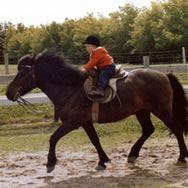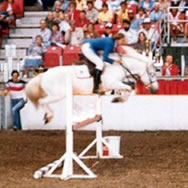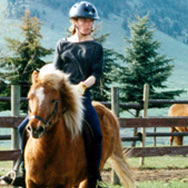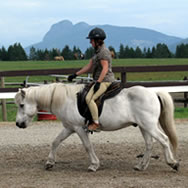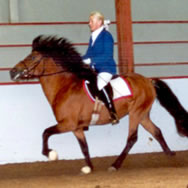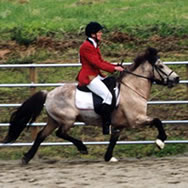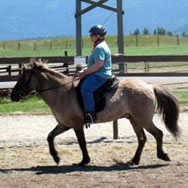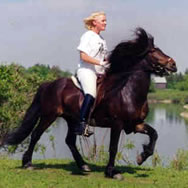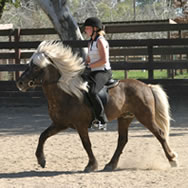About Training
at The Icelandic Horse Farm
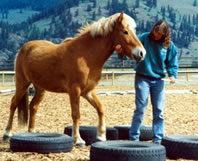 Due the number of our own horses we have to train each year, we do not usually take in many outside horses. Exceptions are made from year to year depending on space.
Due the number of our own horses we have to train each year, we do not usually take in many outside horses. Exceptions are made from year to year depending on space.
Every horse that is started at The Icelandic Horse Farm is trained with the TTEAM philosophy in mind. Based on classical principles with an emphasis on reason and understanding, the TTEAM method aims to teach horses to learn, rather than only perform specific tasks through repetition. Every exercise looks to put the horse in a posture we would want under saddle, without bracing, tension, or fear and engaged. [Note! See more photos in gallery below.]
Young horses learn to navigate plastic and other scary obstacles of all kinds in a non-confrontational way, looking to make things easier for the horses to understand, in small steps if necessary, rather than simply increase pressure to push them through it.
Ground exercises are cornerstone to the training process; incorporating TTEAM groundwork to improve, focus, balance, and straightness; as well as Connected Riding ground exercises, that are designed to teach horses how they can release through the body and carry themselves in a more “correct” and effective way, while learning to be balanced, relaxed, and supple. The Connected groundwork has proven to be incredibly effective in influencing gaits, reducing stiffness, and bio-mechanically preparing horses to carry the weight of the rider.
Neck line driving and ground driving are used extensively to teach horses to respond to signals from behind, and be comfortable with lines near their legs and hind quarters. The neck line driving, unique to TTEAM, helps to teach horses to stop through their entire body, and shift their weight off the forehand. Ground driving is done from the halter, as the weight of the lines can feel too heavy on the bit for a young horse causing them to get behind the vertical or lean on the bit.
Horses are prepared for mounting by being ponied, and walking between people standing on blocks. These steps are taken as slowly as necessary for each individual horse. As a result, the horses do not buck or explode the first time they are mounted.
Once a horse has been mounted, ground exercise is continued, as is bodywork to ensure a horse is not holding excessive tension. Connected ground work helps increase a horse's understanding laterally, with exercises that are taken under saddle. Gaits are not emphasized until a horse is strong enough to really carry the rider easily, often after months of regular riding, and can truly understand basic transitions.
Once horses have progressed through the basics the gaits may be developed. Emphasizing lateral flexibility and connection through the body, horses are brought along slowly with a combination of arena work, and riding on the trail where dogs, logging trucks, and bicycles are the norm.
With each horse there is an emphasis on mental preparedness and stability. Horses are not pushed beyond their capacities, or taken to the point of being a shut down robot. We also encourage responsibility to be taken by owners to continually improve on their own skills and abilities.
